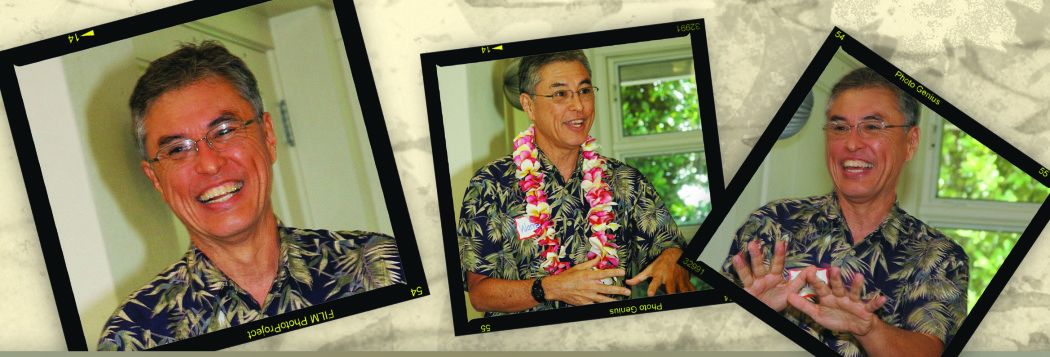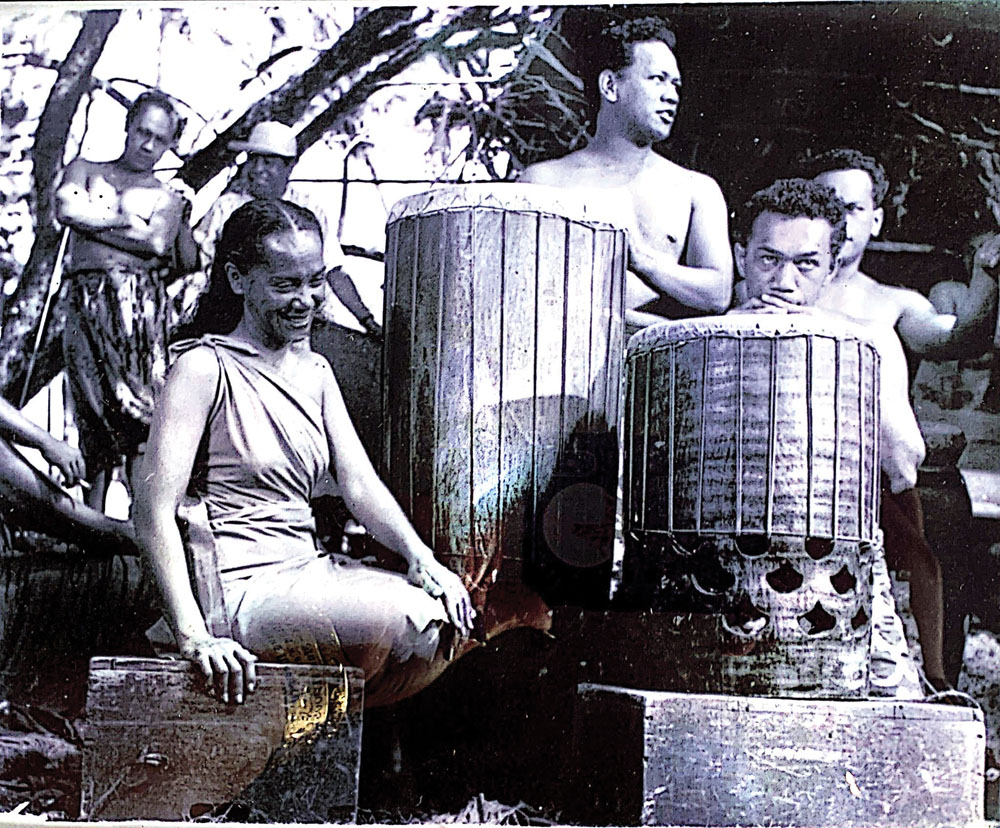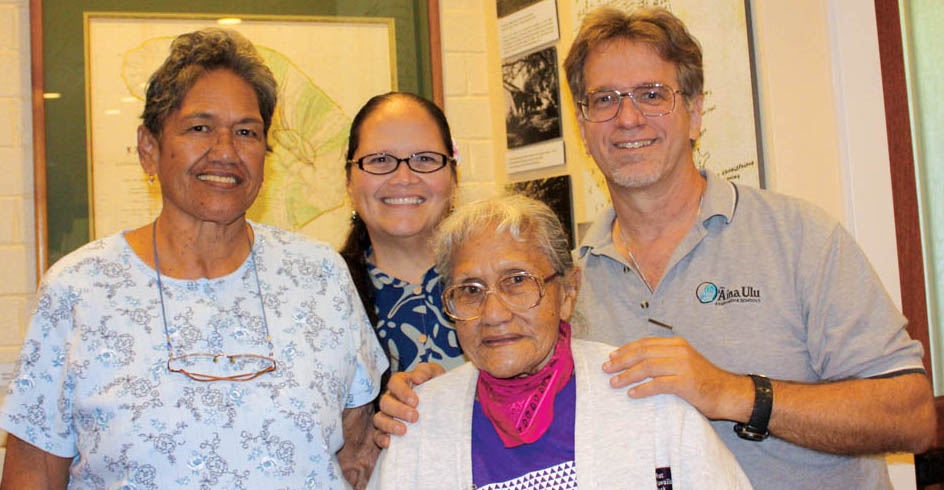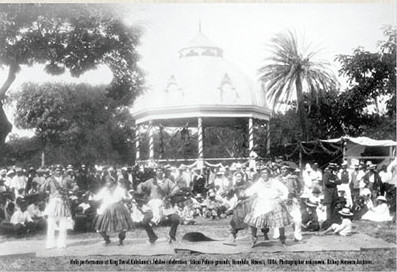
Telling Grandpaʻs Story: How to Preserve Lifeʻs Experiences
 By Fern Gavelek
By Fern Gavelek
Everyone has something to say, and there’s a science to recording it for future generations. When you ask Grandpa what it was like working on the sugar plantation, you had better know how and what to ask while getting it all down the way he wants.
So says Dr. Warren Nishimoto, director for the University of Hawai‘i Center for Oral History. The O’ahu native shared his experiences of collecting oral histories for his book, Talking Hawai‘i’s Story: Oral Histories of an Island People, offering tips for effectively recording the narratives of others at a workshop presented recently by the Kona Historical Society.
Before the written word came to Hawai‘i—carried here by the missionaries—the history of the people was passed down, generation to generation, through oral tradition. A dying art, that same storytelling tradition may be revived by families and other organizations today and recorded or written for future generations. Warren defines oral history as taking the spoken word and turning it into a tangible thing—the written word—so it can be recalled in a different way.
“Oral history is talking story about real-life experiences,” says Warren. “I know each person I meet has a story that’s worthy of telling and preserving, a set of experiences that will be of benefit to someone else. If everyone’s life experiences were preserved, just think of how much more we would know.”
Recording those experiences involves more than just turning on a tape recorder and saying, “tell me your story,” he says. If you do that, you run into all kinds of trouble, like not knowing what’s being talked about—or the significance of a reply. A good oral history is a detailed process that’s built on trust between the interviewer and subject.
The first step in collecting oral history is to ask yourself who you want to interview and why, according to Warren. Usually the project is a life history of someone, such as an elder family member, but it could be a collection of interviews about a certain topic, place or historical event.
For example, Talking Hawai’i’s Story, featuring unique personal stories collected by Warren, tells the experiences of men and women who began their lives in Hawai‘i in the first three decades of the last century. They were from different islands and worked in different occupations, but the time element connects them. Their stories give snapshots of life during that 1900 -1930 time period.
Researching the chosen topic is the next step, he continues. Consult newspapers, books and websites, plus diaries, scrapbooks, letters and photo albums. Talk to others who know the person or topic. Genealogical information is available from the Hawai‘i State Archives, the Bureau of Immigration and Naturalization, the Hawai‘i State Dept. of Health and the Church of Jesus Christ of Latter-Day Saints. “Research will acquaint you with things like occupational terminology,” notes Nishimoto. “Knowing a topic shows the subject you are prepared and care. It is a must.” This is particularly important for an interview with someone you don’t know well.
He suggests the interviewer compile all the gathered details into a chronological timeline, plotting dates, important historical events (such as the bombing of Pearl Harbor) and personal data: when the subject was born, moved, was employed, married, had children, etc. After this preparation, it’s time to make initial contact with the subject and explain the reasons for wanting his or her story preserved.
TIP: If the person is hesitant to talk or be interviewed, ask if his grandchildren know what he went through.
“Always tell the subject what your topic is so they are willing and not caught off guard,” emphasizes Warren. “Let the person know that you will let him read and approve his story after you collect it and transcribe it. If he wants the use of pidgin corrected, then assure it will be done.”
He adds, “It’s essential to have a good rapport with the subject. Work on building a good relationship and trust during your first meeting. Take a small gift to show respect.”
TIP: Don’t use the words “interview” or “tape recorder” when making interview arrangements—it implies questions and sounds intimidating. Soften your approach by saying, “let’s chat” or “let’s talk story.”
For the initial meeting, Warren says to limit questions to biographical details and jot down answers, “don’t show up with a tape recorder and keep questions simple. Keep the session no longer than an hour-and-a-half—tops. Before ending, ask if it’s okay to bring a recorder for the next meeting.”
TIP: Let the subject suggest times for meetings.
From the collected biographical data, make a data sheet and evaluate the person’s depth of knowledge, memory retention and clarity of speech. Make a questionnaire outline for the upcoming, recorded interview. “Use the outline as a guide,” stresses Warren. “Ninety percent of oral history is listening, not asking questions. You want to exhibit a natural inquisitiveness.”
TIP: Before the recorded interview, practice with your recording equipment.
Warren recommends using a lavaliere microphone that is worn by the subject. It results in better quality and less background noise. Allow one to two hours for each interview session and rely on electric current, rather than batteries, if possible. “Position yourself only a few feet away from the subject,” he says.
Begin the recorded interview with a short introduction identifying who is being interviewed, where and why. During the interview, phrase questions in a conversational manner to encourage well-detailed and complete responses, rather than yes or no answers. Maintain friendly eye contact and keep glances elsewhere to a minimum. Start with easy questions; avoid controversial ones.
“The goal is for the subject to forget he is being interviewed,” shares Warren. “It’s not an interrogation or a survey.” He adds that interviews are usually more successful if only the interviewer and the subject are present. “Remember, it’s a simple act of two people connecting with each other and you are the guide.”
TIP: A good interview question icebreaker: “What did you do to have fun as a kid?”
To keep the subject from straying into non-pertinent subjects, pull him back as quickly as possible by saying, “Before we talk about that, I’d like to hear a little more about your….”
TIP: Be prepared to take notes and follow up on details and unexpected avenues of discussion.
Some of the best oral history interviews are ones that include subjects not planned for in the outline. These subjects often shed light on a historical topic or the subject’s life.
TIP: Oral history is serendipitous. You never know for sure what you’re going to get.
Nishimoto says not to inject your own bias or make value judgments about another’s life experience. “If you suspect information given to you is incorrect, don’t challenge it. It’s okay to say there are other accounts to a story,” he continues. “Collect that person’s story and later research it to establish what probably happened. Inaccurate names can be corrected later in the transcript.”
When summing up the challenges of collecting stories, Warren says to remember that oral history deals with human memory and emotions. “Some people don’t think what they have to tell is special and they need to be convinced otherwise,” he explains. “The stories of everyday living have their significance because everyday living keeps changing.”
He recalls how a subject, in his 80s, was grouchy. He kept questioning, “why talk to me?” Warren went to his home and the man declared, “My nephew made me do this.” The interview turned out great and the octogenarian was given the transcript. When Nishimoto later talked to the nephew, he said, “My uncle came up to me, tossed me the transcript and said, ‘This is my story, I want you to read it.’ Then I knew he was happy he did it.”
After the recorded interview is done, check notes and spellings or any unclear information. Then it’s time to process and preserve the interview for future accessibility and archival storage. According to Warren, it takes four hours to transcribe an hour of tape and it may be worth it to hire a professional transcriber. A transcriptionist types everything heard, except for meaningless utterances or false starts. Davis, Back and MacLean’s Oral History: From Tape to Type is a guide for how to transcribe interviews. Next, compare the transcript copy to the tape and then edit for accuracy and clarity. Verify any spellings, dates, etc.
Give the subject a clean copy of the transcript to review for facts and spelling and then ask for assistance in clarifying any ambiguous responses. Warren says some subjects may be concerned with their grammar or style of speech. It’s best to emphasize the importance of keeping the transcript as faithful to the tape as possible, but if the subject is unhappy with his speech and wants it corrected, his request should be honored. If your project has commercial purposes, Warren also recommends having the subject sign a legal agreement saying he understands the purpose of the project.
After final corrections are made to the transcript, the oral history can be enhanced with additional materials: an introduction to the project, biographical summaries of subjects, glossary of non-English words and photos. Compile, print and bind the transcript or save on digital media. Present the subject and whoever else is intended to get one with copies of these life treasures. So others can benefit from the oral history, Warren suggests finding a repository to deposit the transcript so more people can benefit from its contents, such as a library. The University of Hawai’i’s Center for Oral History (COH) preserves the recollections of Hawai’i’s people and disseminates transcripts to researchers, students and the community. It also develops books from transcripts, such as Talking Hawai‘i’s Story.
Warren says the 29 oral histories in the book were collected over a 33-year period. Most of the people whose stories are told have since passed on. He and his wife, Michi Kodama-Nishimoto, did the majority of the interviews. When asked if she had any tips for collecting life experiences, Michi recommends finding a commonality between the interviewer and subject.
“Have a conversation so the subject can learn about you, the interviewer,” she suggests. “Encourage the subject to ask you some questions so they know you are worthy of being given their stories. It also gives you the opportunity to model how to answer complete questions. It’s a give and take.” ❖
Talking Hawai‘i’s Story-Oral Histories of an Island People can be purchased at the Kona Historical Society’s gift shop in Kealakekua. For more info, visit www.oralhistory.hawaii.edu, http://dohistory.org/on_your_own/toolkit/oralHistory.html.
Contact writer Fern Gavelek at ferng@hawaii.rr.com.


